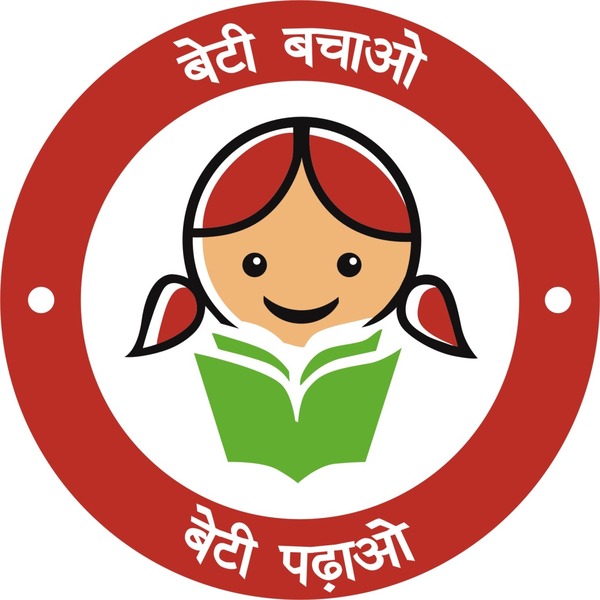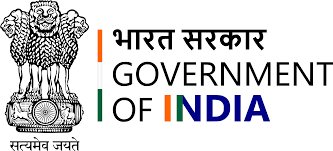 Government Of India
Government Of India
The application of a formal systematic critical examination to the process and engineering intentions of new or existing facilities to assess the hazard potential of mal-operation or mal-function of individual items of equipments and their consequential effects on the facility as a whole.
Source models represent the material release process. They provide useful information for determining the consequences of an accident, including the rate of material release, the total quantity released and the physical state of the material.
Dispersion models describe the airborne transport of toxic/inflammable materials away from the accident site and into the plant and community.
The uncontrolled release of energy from a flame front propagating through flammable medium and characterized by the generation of heat, light and pressure.
Risk is defined as a measure of economic loss or human injury in terms of both the likelihood and the magnitude of the loss or injury.
Risk assessment includes accident scenario identification and consequence analysis. Scenario identification describes how an accident occurs. It frequently includes an analysis of the probabilities. Consequence analysis describes the damage expected. This includes lose of life, damage to the environment or capital equipments and days outage.
A systematic, objective and documented evaluation of the occupational safety and health systems and procedures
A part of the overall management system that facilitates the management of OSH and risks associated with the business of the organization
MCLS is described as the worst “credible” accident or as an accident with a maximum damage distance, which is still believed to be possible.
The concentration of a mixture of flammable vapor or gas in air (% by volume of vapor to air) in which a flash will occur or a flame will travel if the mixture is ignited
No, ADIS course runs during day (full time) from Monday to Friday (daily from 0930 hrs to 1800 hrs.)
No, ADIS course runs during day (full time) from Monday to Friday (daily from 0930 hrs to 1800 hrs.)
The entire course takes one year
No, Institute fees is to be paid in full at the time of admission
This is a statutory requirement for appointment of Safety Officer in Factory/Dock etc.
The student is to maintain certain minimum percentage of attendance to sit in the examination at the end of the course
No, the entire course is designed to run in English only.
No, it is a full time regular course at Central Labour Institute, Mumbai
No, it is a full time regular course at Central Labour Institute, Mumbai
The student will have to do the project work in an industry on the basis of actual assignment given by the project guide.
The course is affiliated to the Maharashtra State Board of Technical Education, Mumbai
Maharashtra State Board of Technical Education, Mumbai conducts the examination and awards certificate of this course.
The following activities are covered under MSIHC
- An operation or process listed in Schedule 4 carried out in an industrial installation involving one or more hazardous chemicals
- An isolated storage involving one or more hazardous chemicals listed in Schedule 2, and
- Pipeline for conveyance of a hazardous chemical other than the flammable gas at a pressure of less than 8 bars absolute
The chemicals fulfilling the criteria given in Part I and/or listed in Part II of Schedule I and chemicals listed in Schedule 2 and 3 are covered under MSIHC Rules
If one of the operations or processes listed in Schedule 4 is carried out in a factory involving one or more hazardous chemicals, an occupier has to first ascertain the category to which his factory belongs i.e. whether the factory comes under lower-tier, middle-tier or higher-tier because the requirements/ provisions are different for different categories of factories
The three categories of factories are given below :
The three categories of factories are given below :
Lower-tier Factory
Factories wherein an operation/process given in Schedule 4 is carried out involving one or more chemicals which satisfies any of the criteria laid down in Part I of Schedule I and/or listed in Column 2 of Part II of Schedule I irrespective of quantity of hazardous chemicals stored inside the factory, fall under this category.
Middle-tier Factory
Factories wherein an operation/process given in Schedule 4 is carried out involving one or more chemicals in quantities equal to or more than the quantity given in Column 3 of Schedule 2, fall under this category
Higher-tier Factory
Factories wherein an operation/process given in Schedule 4 is carried out involving one or more chemicals in quantities equal to or more than the quantity given in Column 4 of Schedule 2, fall under the category
| Category | Provisions/Rules of MSIHC applicable |
| Lower-tier | 4, 5 and 17 |
| Middle-tier | 4, 5 and 17 |
| Higher-tier | 4, 5, 7, 8, 9, 10, 11, 12, 13, 14, 15 & 17 |
| Rule 4 |
General Responsibility of the Occupier –
|
| Rule 5 | Notification of major accident in Schedule 6 |
| Rule 6 | Industrial activity to which rules 7 to 15 apply |
| Rule 7 | Approval and notification of sites in Schedule 7 |
| Rule 8 | Updation of notification following changes in T.Q. |
| Rule 9 | Transitional provisions |
| Rule 10 | Safety Reports/Safety Audit Reports with help of expert:Safety Reports in Schedule 8. Safety Audit every year |
| Rule 11 | Updating of reports under Rules 10 |
| Rule 12 | Requirements for further information to be sent to the authority |
| Rule 13 | Preparation of on-site emergency plan by the occupier in Schedule 11(i). Authority to ensure a rehearsal of the plan at least once in a calendar year |
| Rule 14 | Preparation of off-site emergency plan by the Authority in Schedule 12(i). Authority to ensure a rehearsal of the plan at least once in a calendar year |
| Rule 15 | Information to be given to persons liable to be affected by a major accident |
| Rule 17 | Collection, development and dissemination of information in Schedule 9 |
“Major accident” means an incident involving loss of life inside or outside the installation, or ten or more injuries inside and/or one or more injuries outside or release of toxic chemicals or explosion or fire or spillage of hazardous chemicals resulting in on-site or off-site emergencies or damage to equipment leading to stoppage of process or adverse affects to the environment
An occupier of middle or higher-tier factory should submit a written report to the concerned authority i.e. the Chief Inspector of Factories of the State where the factory is located in Schedule 7 at least 3 months before the commencement of that activity.
An occupier shall notify the major accident within 48 hours to the concerned authority (the Chief Inspector of Factories in case of factory) and furnish thereafter a report relating to the accident in Schedule 6.
If the factory is middle or higher-tier factory, the occupier has to prepare on-site emergency plan.
An occupier of a major accident hazard installation has to provide such information relating to industrial activity under his control to the concerned authority i.e. the District Emergency Authority/District Collector as may be required including the nature, extent and likely effects of site of possible major accident.
The mock drill of the on-site emergency plan shall be conducted every 6 months
An occupier is responsible for conduct of mock drills of on-site emergency plan
The District Emergency Authority /District Collector is responsible for conduct of rehearsal of off-site emergency plan and the frequency is at least once in a calendar year.
No. It is not required for every MAH installation. The Safety Reports and Safety Audit Reports are required to be prepared by an occupier of higher-tier factories
The Safety Report shall be prepared in the prescribed format given in Schedule 8 at least 90 days before the commencement of the activity. The Safety Audit should be carried out and the Safety Audit Report shall be updated once in a year.
The duties of the authorities are :
- Inspect the industrial activity at least once in a calendar year
- Report on compliance of Rules by the occupiers to the Ministry of Environment and Forests, through appropriate channel annually
- On receipt of report on major accident, undertake full analysis of the major accident and send requisite information within 90 days to MOE&F through appropriate channel
- Compile information regarding major accidents and make a available copy to MOE&F through appropriate channel
- Inform in writing to occupier of any lacunae to be rectified to avoid major accidents
- Approve the notification of sites within 60 days from the date of receipt. Report if notices contravention and issue improvement notice within 45 days of the receipt of the report
- Prepare and keep up-to-date off-site emergency plan and ensure that rehearsal of off-site plan is conducted once in a year.
Section 29 of the Factories Act deals with lifting machines and lifting tackles which are defined under explanation. In our opinion hand driven lifting equipment does not require certification.
Under the Factories Act, definition of “worker” is clearly given. For the purpose of calculation of employment strength, officers and executives etc. have to be taken into account.
The term “factory” is defined in Section 2(m) of the Factories Act, 1948. It means that in any premises if 10 or more workers are engaged in a manufacturing process with aid of power or if 20 or more workers are engaged in the manufacturing process without aid of power such premises will be covered under the Factories, 1948
The child below 14 years of age is not allowed to work in any factory.
The women are allowed to work in any factory except between the hours of 7 pm to 6 am i.e. women are not allowed to work during night time. However, there are certain operations/processes, which are considered hazardous. In such operations/processes women are not allowed to work.
No adult is allowed to work in a factory for more than 48 hours in any week.
No adult worker is allowed to work in a factory for more than 9 hours in any day.
The Factories Act and the rules framed thereunder are enforced by respective states/UTs. through the office of Chief Inspector of Factories under the Labour Department of the State Government/UTs.
The State Government is empowered to declare that al or any of the provisions of the Act shall apply to any place wherein manufacturing process carried out irrespective of number of workers employed therein.
The State Government may exempt with certain conditions, in workshops whether manufacturing processes are carried out for purposes of education, training, research or reformation from all or any of the provisions of this Act.
Yes, It is compulsory. The approval, license and registration of a factory is compulsory before starting the manufacturing process. The occupier of the factory should submit the plan to the Chief Inspector of the State for approval. After the approval, the licensee will be granted by the CIF and the factory will be registered.
There are many provisions, which are to be strictly followed by the occupier. The details are available in a publication known as the Factories Act, 1948. There are 120 sections divided into 11 chapters, which can be referred for detailed information.
The workshop for Safety Committee Members is conducted twice in a year. No. of participants would be around 25-30 per batch. The fee charged would be Rs.800/- (institute fee) + Rs.1200/- (course fee) per participant (under revision). The duration of the workshop is three days and the contents of the workshop would cover the role of safety committee members in a participative forum.
Advance Training Programme on Occupational Health & Environmental Medicine :
| Eligibility | Doctors with MBBS qualification |
| Duration | 2 weeks |
| No. of part. | Around 20 |
| Fees |
Institute fee: Rs.1700/- Per participant (Under revision) |
| Contents | Lectures, visits, discussions, films, laboratory demonstrations |
3 months Post Graduate Certificate Course in Industrial Health
| Eligibility | MBBS degree – Completion of internship: registration with Medical Council of India and experience of 2 years in this field |
| Duration | 3 months |
| No. of part. | 50 |
| Fees |
Institute fee: Rs.1200/- Per participant (Under revision) |
| Contents | Lectures, tutorials, demonstrations, visits, laboratory exercises. A Project work is also to be done as a part of the programme |
| Selection | By interviews of short listed candidates |
| Examination | At the end of the course, the successful candidates will be awarded a certificate |
With regard to One Month Specialised Certificate Course for Supervisors working the hazardous process industries, there are no additional contents being provided beyond the contents covered under “Diploma in Industrial Safety Course” conducted by this institute.
| Eligibility | A Bachelor’s degree with Chemistry or Diploma in Chemical Engineering or Technology with not less than 5 years experience OR A Post Graduate Degree in Chemistry or a Bachelor’s Degree in Chemical Engineering or Technology with not less than two years experience. |
| Duration | 1 month |
| Periodicity | Yearly |
| No.of part. | 40(Not more than 5 applicants from a single organization) |
| Fees |
Institute fee: Rs.1000/- Per participant (Under revision) |
NOTE: The experience stipulated above shall be in process operation and maintenance in Chemical industry.







